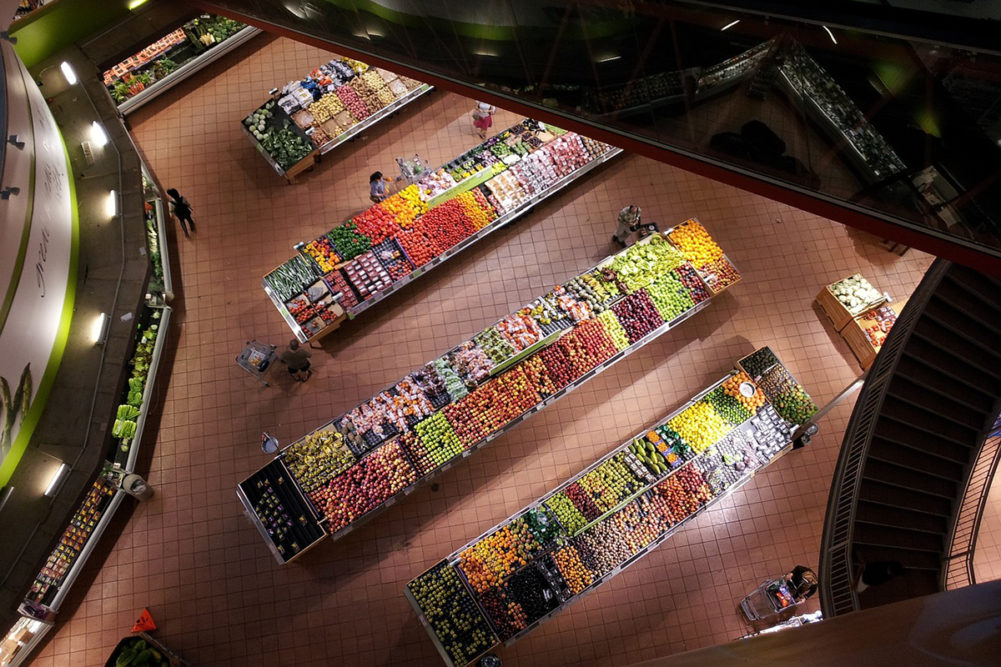It’s no surprise to hear that shoppers are worried about inflation and are changing their buying habits accordingly, Jonna Parker, principal of the Fresh Center for Excellence at IRI, said in a recent IRI-sponsored webinar.
But some of those changes don’t always follow predictable courses — and many of them leave room for premium options.
“People are cutting back on nonessentials, but what’s ‘essential’ is unique and personalized. Despite price inflation, you cannot say that consumers are leaving fresh.”
For instance, Parker said, many consumers put “convenient” and “fresh” in the “essential” column. Even during inflationary times, perishable sales are up — not just dollar sales, but volumes, too.
“Just because the price is up doesn’t meant customers are shying away from convenience and from spicing up meals, and that really favors the fresh departments,” she said.
And fortunately, many of the prices of fresh foods have moderated in recent months since the spikes earlier in the year that garnered meat and other fresh foods unwelcome headlines, Parker said.
In the current inflationary age, chicken has fared better than beef and pork because it typically costs less per pound, Parker said. Around the corner in the fresh perimeter, meanwhile, some instore deli categories have been “trending extremely high.”
“Deli entrees are such a fascinating story. Asian- and Mexican-based entrees, for instance. And sushi, which was the single largest contributor year-over-year.”
The fresh-made sandwich category is also thriving, Parker said. A quick and easy lunch that also checks the “healthy” box is high on convenience-minded consumers’ lists.
“Value, convenience and health and wellbeing are very important to consumers, and it’s why fresh sales are still strong despite inflation,” said Rick Stein, vice president of fresh foods for FMI – The Food Industry Association, another participant in the webinar. “The fresh shopper is a very valuable consumer, and it sends the message to traditional supermarkets to double down on fresh.”
“Younger shoppers are coming to the whole shopping process very differently,” added IRI’s Lynne Gillis, another participant. “They’re far more multicultural than we’ve ever seen before, and they’ve been exposed to a variety of things that is really unprecedented. They’re also much more likely to act on their values and vote with their dollars.”
Despite that worldliness that separates them from older shoppers, shoppers under 30 were not as likely as previous generations to have stood by mom or dad’s side as they cooked, learning the tools of the trade.
“They need a little help,” Gillis said. “We need to be ready to help them in ways that make a difference to them.”
Best practices: Steering shoppers in the direction of premium
The average grocery store today has 300,000+ SKUs, nearly eight times more than the average store of the 1970s. Younger shoppers love all that variety, Gillis said, but navigating it — and finding premium products that are also a value — can be a challenge for them.
“If they come into a produce department and see a sea of clamshell packaging, but the retailer says they’re committed to sustainability, that’s going to be a disconnect for them.”
“Discovery” is a key phrase for younger shoppers looking for both premium and value, and Trader Joe’s is far does far and away the best job of getting that right, Gillis said.
“Trader Joe’s has a really curated experience in their stores — enough variety without being overwhelming.”
Outside of Trader Joe’s, there’s a lot of sameness in the retail experience, Parker said. Stores that used to have unique premium SKUs have been copy-catted to such an extent that most stores now carry all the same things.
“We don’t all have to be Trader Joe’s, but we do have to connect differently,” she said. “And decisions have to be based on solutions — not on product categories.”
Trader Joe’s does a really good job with “pithy and engaging messaging” that aligns with younger consumers and interrupts whatever they’re doing enough to grab their attention, said Sally Lyons Wyatt, executive vice president and practice leader of Client Insights.
Sometimes that messaging can be as simple as simple signage at point-of-sale, Parker said. Pulling a few premium items together and tying them together with a “meal deal” message, for instance, can turn a retailer into a “trusted advisor,” she said.
“Those investments by other channels in fresh really driving home that fresh in these channels can be as good as in traditional grocers. What fresh means has really evolved.”

